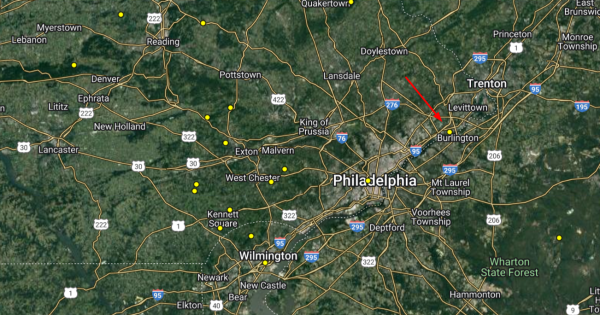At the very end of August, Heritage Conservancy completed installation of a new Motus wildlife tracking station atop Keystone Elementary School, next to its Croydon Woods Nature Preserve in Croydon. The project will provide the global science community with critical information on local wildlife migration.
“We are feeding data to scientists around the world,” says Shannon Fredebaugh-Siller, Community Engagement Programs Manager at Heritage Conservancy.

The Motus Wildlife Tracking System is an international collaboration of researchers and organizations who tag wildlife and use radio telemetry to track many species of migratory wildlife. This community science network allows researchers to share and collaborate on projects that aid in knowledge about migratory wildlife and collect data to help in conservation efforts.
Detection stations are set up around the world to pick up signals from tags attached to migrating wildlife, such as birds, dragonflies, bats, and more. With advances in automated radio telemetry, these tags are small enough to be put on insects, allowing them to be tracked over long distances.

The antennas on the tower pick up the signal of any tag within 5 miles of the station, including wildlife migrating along the Delaware River. The data is shared with a global community of researchers, educators, government entities, and the general public online.
“It is exciting to contribute to this global community science project,” says Tyler Kovacs, Conservation Steward at Heritage Conservancy. He worked with Aaron Coolman from Asio Motus LLC to install the tracking tower. (They are photographed above.)
The location is optimal based not only on its proximity to the Delaware River, but also on Heritage Conservancy’s strong partnership with the Bristol Township School District and Keystone Elementary School.

The data this tower receives will inform researchers about the wildlife that may be utilizing the Delaware River as a migration flyway and potentially using Heritage Conservancy’s nearby Croydon Woods Nature Preserve as a stop-over site.
Heritage Conservancy’s Motus station is only the second in the county, adding important data to wildlife research and conservation in Bucks County and beyond.
The tower is currently collecting data, and multiple bird species have already been detected, including Americana kestrels, lesser yellowlegs, and a purple martin.
Learn more and see the global map on the Motus website.
The project was made possible with the support of Bristol Township School District, McLean Contributionship, and Pennsylvania’s Coastal Resources Management (CRM) Program that receives an annual grant award from the National Oceanic and Atmospheric Administration (NOAA).

